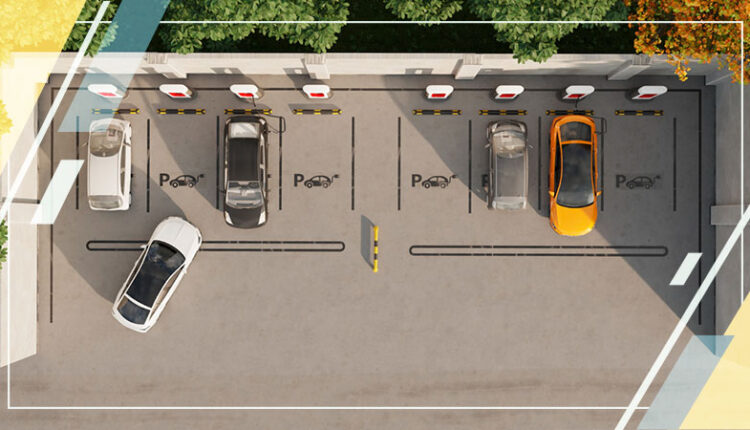In urban areas with limited space, parking has become a significant concern. To address this issue, an automotive automated parking system for vehicles is essential. This system not only optimizes the available space but also ensures the safety of vehicles while providing convenient parking solutions. This parking solution is perfect for any situation, whether it involves multi-story parking or compact spaces. It provides an ideal solution for various parking needs.
So, let’s explore the importance of this remarkable solution and how it truly brings convenience to drivers.
What is an Automotive Automated Parking System?
An Automotive Automated Parking System (APS) is an automatic system designed to optimize the area required for parking cars. It provides car parking on multiple levels that are stacked vertically in order to maximize the number of parking spaces with minimal land usage. The main purpose of the APS system is to transport cars both to and from parking spaces while eliminating much of the space wasted in a multi-story parking garage.
How does an Automotive Automated Parking System Work?
The APS is more similar to an automated storage and retrieval system for cars. It is powered by electric motors or hydraulic pumps that help move the car into a storage position. At the time of parking, drivers take their cars to the entrance of the automatic parking system. Then, sensors measure and guide the correct position of the vehicle with instructions to the system, after which the vehicle is moved by mechanical maneuvers to an available space, where it is automatically parked or parked by an attendant.
Benefits of an Automotive Automated Parking System
Automated parking systems offer numerous benefits, making them an attractive solution for various settings. Below are some of the key advantages:
● Space Saving
APS saves a significant amount of space, allowing for more efficient use of land and enabling the construction of parking facilities in areas with limited space, such as cities and densely populated areas.
● Enhanced Safety and Security
APS provides better security by eliminating open spaces that can expose unattended cars to thieves. Additionally, they remove the need for pedestrians to walk through dim, shadowy parking areas, reducing the opportunity for theft, destruction, or other security concerns.
● Reduced Emissions
By minimizing the need for driving to circle in search of parking spaces, automotive automated parking systems contribute to reduced emissions and less air pollution.
● Efficiency and Convenience
APS streamlines the parking and retrieval processes, requiring less driver involvement and offering efficient use of space. They can also offer time-efficient parking solutions, making the parking process more convenient for users.
● Versatility and Integration
APS is versatile and can be integrated into various settings, including retail stores, apartment buildings, and business premises. They offer a solution for managing parking spaces and can be equipped with contactless payment terminals for added convenience.
Innovations in Automotive Automated Parking System
Below are the latest advancements in APS:
1. Parking with Robots
Robots have become increasingly prevalent in a wide range of industrial applications, facilitating accurate and efficient operations. These robots are now finding application in parking systems as well.
In this field, Robotic Parking Systems Inc. has developed the largest & fastest automated parking garages around the world, integrating extreme reliability and redundancy into every aspect of the automatic parking process. This system is designed to be more economical, greener, and safer than traditional urban parking methods.
2. Internet of Things (IoT) Integration
The integration of IoT technology has brought innovations to the automotive industry, allowing communication between devices online and making parking processes smoother and easier to complete. For example, drivers can see real-time parking spaces through an application service or a site, enhancing the overall parking experience.
For example, MobiDev has developed a smart parking system based on IoT, utilizing IoT devices, including sensors and microcontrollers. It provides real-time updates about parking availability to users via web and mobile applications. The system uses technologies such as the ESP8266 microcontroller, HC-SR04 distance measurement sensor, MQTT protocol, and Amazon Web Services (AWS) for cloud and analytics.
3. Fully Automated Parking Facilities
Fully integrated automated parking facilities are capable of parking, receiving, and retrieving passenger vehicles automatically. All parking operations are performed by multiple independent machines directed by computer programs, executing procedures with no human intervention.
Its best example is fully automated parking solutions designed by Unitronics that make parking operations convenient and secure. Their systems are designed to optimize space usage and streamline the parking process.
To Sum It Up
The automotive automated parking system landscape showcases a diverse range of innovative technologies and solutions. From the safety of vehicles to driver parking convenience, this system offers various benefits. With continuous advancements in technology and a focus on user-centric design, the future of automotive automated parking systems holds promise for creating smarter, more efficient, and environmentally friendly parking solutions. As the industry continues to evolve, the integration of cutting-edge technologies will play a pivotal role in shaping the next generation of automated parking systems.


